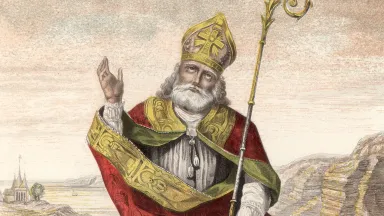
St. Patrick’s Day, celebrated on March 17th, is a vibrant holiday synonymous with green colors, shamrocks, and a pint of Guinness. This day honors the remarkable life and enduring legacy of St. Patrick, the revered patron saint of Ireland. While its roots lie firmly in Irish tradition, the holiday has transcended borders to become a worldwide celebration of Irish culture. It is characterized by lively festivities, joyous parades, and a spirit of revelry that brings people together. Curious about who participates in this lively occasion, the background of St. Patrick, and its recognition as a holiday in the United States? Read on to discover all the fascinating details.
Global Participation in St. Patrick’s Day Festivities
St. Patrick’s Day is embraced by millions around the globe, especially among those with Irish heritage. Countries like the United States, Canada, the United Kingdom, Australia, and, of course, Ireland celebrate this special day with great enthusiasm. People from diverse backgrounds join in the festivities, wearing green attire, participating in parades, and savoring traditional Irish food and beverages. A standout tradition in Chicago sees the Chicago River dyed a brilliant kelly green, a spectacular visual that has captivated residents and tourists alike for over six decades, coinciding with the city’s own St. Patrick’s Day parade.

In a notable celebration of St. Patrick’s Day this year, Micheál Martin, the Irish Prime Minister or Taoiseach, visited the White House on March 12. This visit highlights the strong ties between Ireland and the United States, especially during this festive occasion that celebrates Irish culture and heritage.

Understanding the Life and Significance of St. Patrick
St. Patrick, a pivotal figure in Irish history, was a 5th-century Christian missionary and the celebrated patron saint of Ireland. His life story begins in Roman Britain, where he was captured by Irish pirates at the tender age of sixteen and brought to Ireland as a slave. Following a daring escape and a return to his homeland, he felt a calling to return to the land of his captivity, this time as a missionary dedicated to spreading Christianity. St. Patrick is renowned for converting the Irish people to Christianity and is often symbolically associated with driving snakes out of Ireland, a tale that underscores his significance in Irish folklore.
According to historical accounts, St. Patrick is believed to have passed away on March 17, a date that is now commemorated as St. Patrick’s Day. However, the exact year of his death remains a topic of debate among scholars. His legacy continues to thrive through the celebrations that honor his contributions to Irish culture and spirituality.
Clarifying the Status of St. Patrick’s Day as a Holiday in the U.S.
While St. Patrick’s Day is celebrated enthusiastically throughout the United States with lively parades, festive parties, and cultural events, it is important to note that it is not designated as a federal holiday. This means that it does not guarantee a day off for employees unless it happens to fall on a weekend. Nevertheless, in certain states and cities, particularly those with substantial Irish-American populations, St. Patrick’s Day is recognized as a public holiday, allowing for additional festivities and community gatherings.
The absence of federal recognition does not diminish the spirit of celebration, as countless Americans partake in the joy of St. Patrick’s Day, showcasing their pride in Irish heritage and culture through vibrant displays of unity and festivity.






